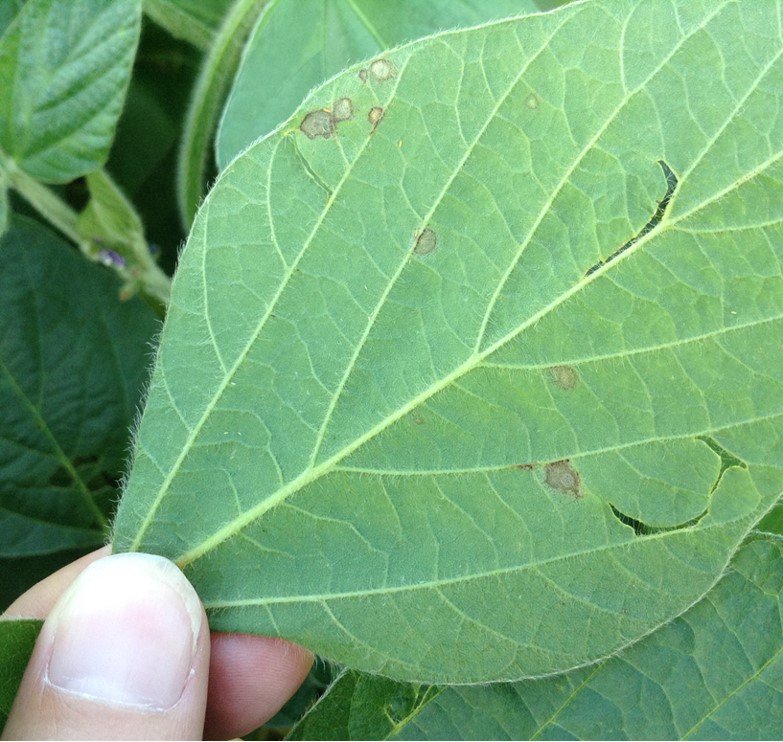June 30, 2016

As soybean crops enter the growing season, be sure to get into the field and scout for mid-season soybean diseases. Anne Dorrance, professor of soybean pathology, Ohio State University, recommends growers be on the lookout for frogeye leaf spot, soybean rust and brown spot.
"I’ve scouted a number of fields and driven by many acres in the past two weeks and the crop looks great," says Dorrance. "A bit behind in some areas, but soybeans can compensate fairly well. With that comes the question what do we need to watch out for next."
1. Frogeye leaf spot. Check for this particularly in those fields where it was present at high levels last year and the field is in soybean this year. In these fields there is a higher probability that frogeye leaf spot will start early.
If you do find spots, gray lesions with purple borders, look on the underside to see if there are whiskers (spores) on the bottom of the lesion.
2. Soybean rust. There has been lots of noise about soybean rust this year; this is the first year that levels are high in the very Deep South areas of Florida, Alabama, Mississippi, and Louisiana. The good news is that the hot, dry weather forecast for most of this summer should keep it in check. In the past, from the sentinel plot surveys we have noted that once a pustule is found (1/100 leaves) – that gives a three-week notice. Unlike our southern producers who have spore deposits every day, Ohio and northern states have to wait for a large wet weather event to bring the inoculum in. It must then multiply in the field (9 to 10 days from inoculation to sporulation) and build-up. To date no weather event has occurred and we will continue to monitor the situation especially for those late planted soybeans.
3. Brown spot. I have been very surprised at how clean the lower leaves and unifoliates are this year, even in no-till fields. This is really an indication of how dry it was for the time period following planting in many areas of the state. We will see how it looks next week after several rain events.
You May Also Like




